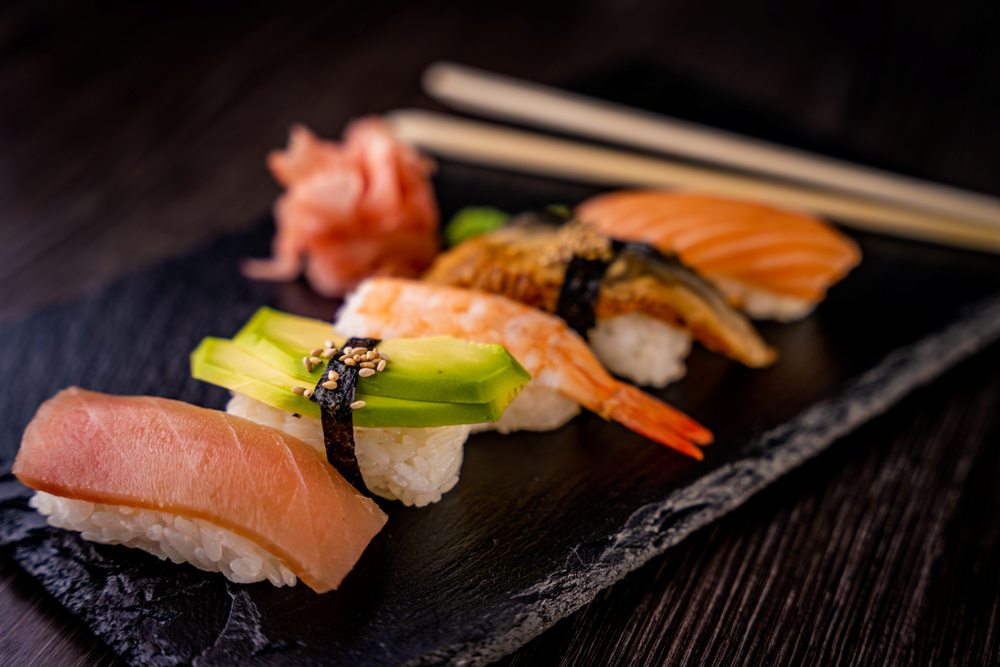
Sushi-grade tuna, the epitome of freshness and quality, is a key ingredient for crafting delicious and healthy sushi meals. Its preparation involves various essential aspects such as quality, freshness, and minimizing the risk of cross-contamination. Whether you're an amateur sushi chef or simply eager to savor restaurant-quality sushi at home, this guide will equip you with the knowledge needed to create the perfect sushi roll or hand-formed nigiri sushi. Moreover, we'll explore crucial factors to consider when selecting sushi-grade tuna to ensure a delectable and safe dining experience.
Preparation is Key
As the term suggests, sushi-grade tuna is of the highest quality available in the market. Although there is no legal definition, this term generally implies the utmost freshness and flavor. When embarking on your journey to select the finest sushi-grade tuna, or before visiting a sushi restaurant, be sure to take the following aspects into consideration.
- Look for Freshness
- Ensure you examine your tuna's freshness. When dining at a sushi restaurant, don't hesitate to inquire about the tuna's age. By doing so, you'll make an informed choice and have the opportunity to enjoy the freshest tuna in your culinary creations.
- Size Matters
- The size of the fish is another essential factor to consider. Tuna pieces that are neither too large nor too small are ideal. Opt for firm tuna cuts devoid of any flaky sections. After purchasing your fish, be sure to store it in a refrigerator. Once you've expertly cut your tuna, store it in a clean, airtight container to retain its pristine freshness.
Assessing Quality
Sushi-grade tuna stands out for its premium quality. It's cleaned and immediately frozen after being caught, setting it apart from regular tuna, which might be cooked or not thoroughly cleaned but still edible. When choosing your tuna, look for these markers of quality:
- Sushi-Grade Label
- Sushi-grade tuna is often labeled as
Sushi Grade
orSushi Grade 1
by fishmongers. This labeling assures customers of the utmost quality and freshness. When buying sushi-grade tuna, you can feel confident that you're getting the freshest fish possible. - Inspection by Wholesalers
- Wholesalers rigorously inspect fish before making them available to consumers. The highest possible ratings are generally associated with sushi-grade tuna, guaranteeing unparalleled freshness and quality. Freshness is the key determinant of sushi-grade fish quality, and a Grade 1 tuna is considered the freshest and most delectable choice for raw consumption.
Ensuring Freshness
Evaluating the freshness of sushi-grade tuna is a critical task, as it directly impacts your dining experience. Take the following factors into account when assessing tuna's freshness:
- Smell
- A key indicator of freshness is the aroma of the fish. Sushi-grade tuna should have a clean, ocean-like scent. Avoid any fish with a strong, fishy odor, as this can be a sign of age or poor handling.
- Texture
- The texture of the tuna can also provide insights into its freshness. Fresh sushi-grade tuna should be firm to the touch and slightly springy. Avoid tuna that feels mushy or overly soft.
Minimizing Cross-Contamination
Ensuring the safety of your sushi-grade tuna is crucial to prevent any health concerns. Keep these points in mind:
- Cross-Contamination Risk
- Sushi-grade fish can be susceptible to cross-contamination with other types of fish. It's advisable to keep them separate to minimize the risk of contamination. Always avoid storing sushi-grade fish alongside non-sushi-grade varieties.
- Hygiene Matters
- Maintain excellent personal hygiene when handling raw fish to prevent the spread of bacteria. Raw tuna can contain parasites that may pose health risks. It's important to be cautious when dealing with raw fish.
Safety Considerations
- Source and Type
- Although sushi chefs have a multitude of fish to choose from, it's essential to consider both the source and the type of fish being consumed. Low-risk fish for sushi preparations include sea bream, Arctic char, and tuna. In contrast, high-risk fish, such as cod, mackerel, and wild salmon, should be handled with caution. Wild salmon, unless labeled
sushi grade,
must be frozen to eliminate parasites and should never be consumed raw. Utilizing a sushi-grade buying guide is a wise strategy to avoid fish species not intended for raw consumption. - Quality Level
- When purchasing sushi-grade fish from a grocery store, prioritize fish of the highest quality. Additionally, consider seeking information about the fish's quality and origin from reputable providers to ensure that you are enjoying a safe and superior sushi experience. Quality sushi-grade providers source their fish from clean and trusted sources, making your dining experience worry-free.
Preparing sushi-grade tuna is a meticulous art that revolves around the principles of quality, freshness, and safety. By adhering to the guidelines outlined in this guide, you can confidently craft restaurant-worthy sushi dishes in the comfort of your own home, all while ensuring that your culinary creations are as delicious as they are safe to consume. The pursuit of sushi-grade tuna, characterized by its highest quality and unrivaled freshness, opens up a world of culinary possibilities for sushi enthusiasts. With a discerning eye for freshness and quality, as well as a commitment to safe handling and hygiene, you can embark on a culinary journey that's both delectable and safe. So, venture forth and savor the extraordinary flavors of sushi, knowing that your sushi-grade tuna preparation skills are of the highest order.
EDITORIAL POLICY
Editorial Policy: The Flash List is dedicated to providing trustworthy editorial content by maintaining strict ethical standards, journalistic integrity, and credible professionalism regardless of any remuneration as working media. The Flash List is not affiliated with third-party companies mentioned and makes no endorsement or guarantee expressed or implied. The preceding article is intended for informational reference only, and does not constitute advice of any kind. Moreover, a qualified professional should be consulted regarding any lifestyle consideration, medical treatment, or monetary transaction, etc. Content contains affiliated link(s) for which compensation was received in accordance with USFTC regulations and terms and conditions.
MORE ON THE FLASH LIST
































